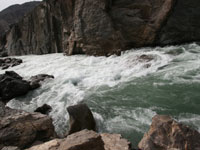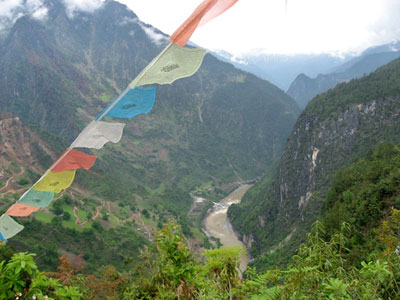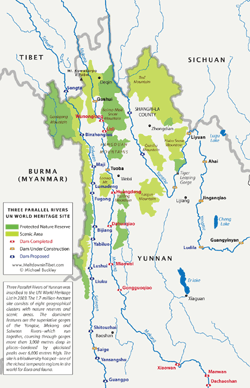The Salween is also known as:
Gyalmo Ngulchu (Tibetan); Nu Jiang (Chinese); Thanlwin (Burmese); Salawin (Thai)
Large Dams
Dam construction on the Salween appears to be the exclusive domain of Huadian Nujiang Hydro Corporation. Downstream on the Salween in Burma, some dams are being constructed by the Three Gorges Project Corporation. In the works for the Salween in Yunnan is a 13-dam cascade. In 2004, after a major campaign by Chinese environmental groups, Premier Wen Jiabao intervened and announced that dam-building plans on the Salween would be delayed until more careful environmental and social impact could be assessed. Again in 2009, Premier Wen Jiabao reiterated this stance. But in early 2011, it was quietly announced that the dam cascade would go ahead as originally planned, reversing the suspension. Work at Saige Dam on the Salween is under way. Meanwhile, downstream on the Salween, plans are under way for more large dams to be constructed by Thai and Burmese governments in a joint effort, including the massive Ta Sang Dam. These dams have generated fierce protest by Thai environmental groups. Find out more from this website: www.salweenwatch.org.
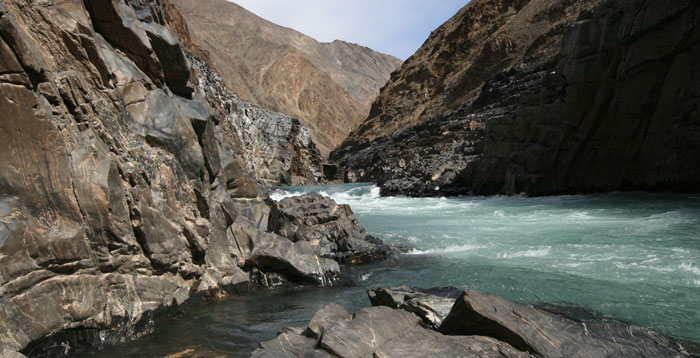
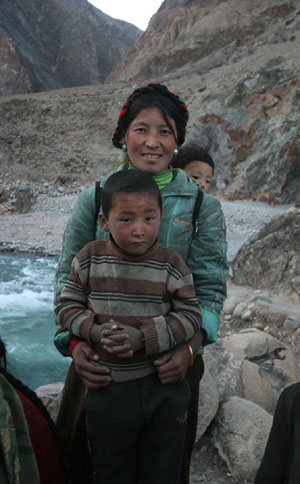
The powerful Salween flows over 2,800 kilometres from source to sea. It rises in the Tangula Mountain region (Amdo, Tibetan plateau) and courses through Tibet, southwest China and Burma (shared with the Thai border), before finally emptying into the Andaman Sea. Through Tibet and Yunnan Province, the river carves a majestic 'grand canyon'—some 700 km in length. At certain points, the canyon is an astonishing 4,500 metres deep. The river is of little commercial value, which has proved to be a positive thing because its great beauty is preserved for much of its length—the last major freeflowing river of Asia.
In upper Yunnan, close to the border with Tibet, large tracts of the Salween run through a region designated The Three Parallel Rivers UN World Heritage Site in 2003. According to the UN assessment, this region 'may be the most biologically diverse temperate eco-system in the world.' One with myriad species of plants and rare or endangered animals and fish. The three rivers referred to are the Yangtse, Mekong and Salween—running close together, roaring through deep furrows in this zone.
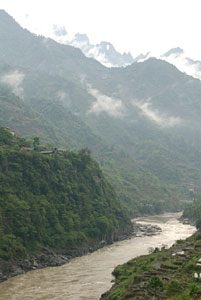
© mqrphoto
Recognition by UNESCO requires that there be no interference in the natural state of the region designated. But no sooner was this World Heritage Site confirmed than Chinese engineering companies announced plans for building large dams on the Salween. In April 2004, plans were announced for construction of a cascade of 13 large dams on the Salween, ranging from a wall height of 35 metres—to a whopping 307 metres (the height of a 60-storey building). The fact that some of these dams would be built within a protected UN World Heritage Site does not appear to be a contradiction to China's ruling powers. The Three Parallel Rivers World Heritage Site is protected"but the rivers that give the name to that site are not protected, it would seem.
Yabiluo Dam lies just 5.5 km from the World Heritage Site, with its reservoir extending to less than 3 km away. Maji Dam will be just 2 km from the WH site, with the waters of its reservoir just 810 metres away. Clearly the local government officials are giving priority to hydropower projects over preservation of heritage and pristine environment.
The presence of dam-builders in the Three Parallel Rivers region is a strong case for international lobbying to have the status of 'UN World Heritage Site' downgraded to a 'UN World Heritage In Danger' listing—thus embarrassing the host nation, China.
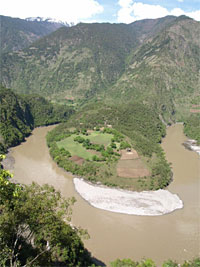
First bend 3km south of Binzhongluo in Yunnan
Saving the Salween has become a cause célèbre in China, because of heavy campaigning by a number of groups—both Chinese and international—to stop construction of large dams on the river due to certain environmental damage on a large scale. It is unusual to see this level of activity among Chinese activists, because opposition to government plans is usually quashed rapidly and can result in long jail sentences for activists. Environmental activism, it would appear, constitutes one of the very rare exceptions to the iron-fisted rule of China's government.
